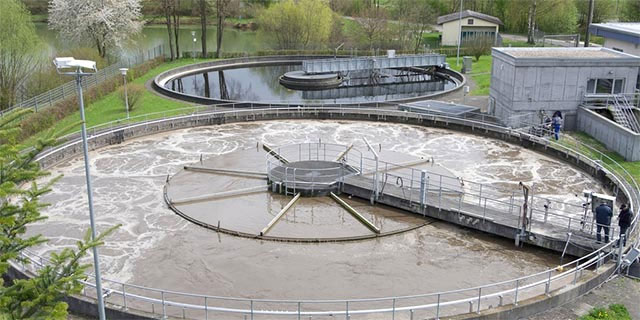It may sound strange, but this is the content of a new study published in the journal Biomacromolecules by the American Chemical Society. Improvements to a new type of biocoating containing bacteria could pave the way for significant advances in waste treatment, biomass production, or biofuel gas in the future.
Specifically, experts from the University of Surrey (United Kingdom) have researched and improved several properties of the biocoating, which includes a polymer layer encapsulating bacteria. When inside the coating, the bacteria do not grow or divide, but they can still perform some useful functions, such as absorbing toxins or carbon dioxide. In fact, there have been numerous previous studies focusing on producing biocoatings with antibacterial properties as mentioned, but in most cases, the bacteria did not survive long, significantly limiting their practical use.

Bacteria can play an important role in wastewater treatment.
Additionally, the biocoating must have a permeable structure to allow water and nutrients to penetrate and sustain bacterial life, while also permitting byproducts of the process to escape.
To enhance the efficacy of bacteria in waste treatment and biomass production, as well as biofuel gas, researchers at the University of Surrey focused on addressing the permeable structure of the biocoating, which is key to the survival of bacteria within. The scientists utilized a system of nanotubes made from Halloysite, an aluminosilicate clay mineral with the empirical formula Al₂Si₂O₅(OH).
The main components of this material are oxygen, silicon, aluminum, and hydrogen, which are readily available and low-cost, previously used as a reinforcing agent for plastic materials. These small Halloysite tubes create channels within the biocoating to enhance permeability.
Through a specially adapted resazurin reduction experiment, the research team found that bacteria encapsulated in the Halloysite biocoating could survive longer than those in conventional biocoatings. They determined that a coating made up of 29% Halloysite provided the best combination of mechanical strength and high permeability. Observations under fluorescence microscopy clearly showed that the bacteria remained viable and metabolically active for an extended period. Thanks to this, live bacteria can be used to clean contaminated water due to their ability to eliminate toxic chemicals.
“This is an interdisciplinary study, closely linking the fields of physics and microbiology. Only by working together can we create a breakthrough in biocoatings,” said Joe Keddie, a professor of soft condensed matter physics at the University of Surrey and a member of the research team.
The majority of bacteria are beneficial, and without them, many essential processes in our daily lives would not function normally. Maintaining the viability of bacteria in biocoatings is crucial for effectively harnessing their potential in various tasks, including waste treatment.


















































